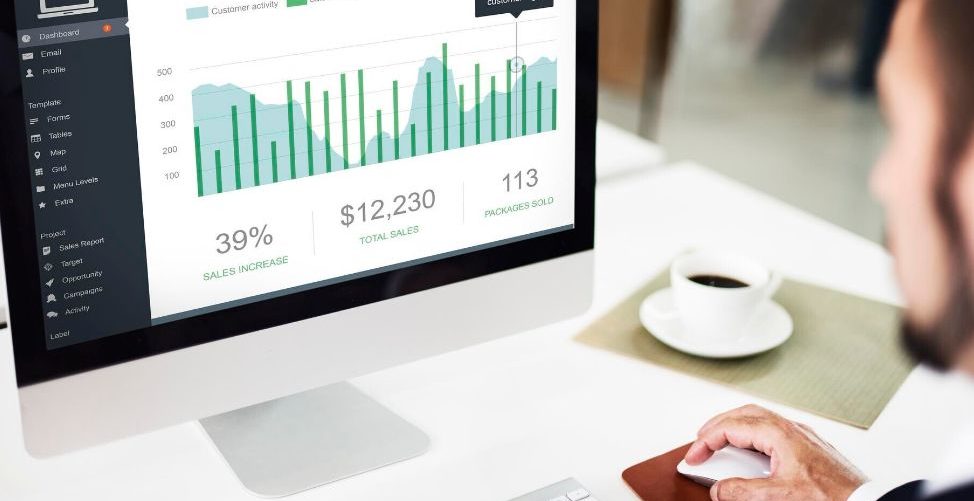August 23, 2021
Cloud Computing Data Analytics in Australia: A Complete Guide for Decision-Makers
As the digital economy accelerates, the combination of cloud computing and data analytics is revolutionizing the way Australian organizations operate. Businesses are now using scalable, on-demand infrastructure to process and analyze massive datasets in real time, unlocking deeper insights, increasing agility, and improving operational efficiency. This guide is designed for Australian decision-makers looking to adopt or optimize their use of cloud computing data analytics. It explores the benefits, architecture, challenges, tools, and strategies required to thrive in today’s cloud-first environment.

Highlights
- Cloud computing enables scalable, real-time data analytics for organizations of all sizes.
- Australian companies are leveraging cloud platforms to improve business intelligence and decision-making.
- Key benefits include cost-efficiency, data integration, accessibility, and rapid deployment.
What Is Cloud Computing Data Analytics?
Definition and Core Concepts
Cloud computing data analytics refers to the practice of using cloud-based platforms and services to store, process, and analyze vast volumes of data. Unlike traditional on-premise analytics systems, which often struggle with scalability and real-time performance, cloud analytics solutions offer elastic infrastructure, global accessibility, and faster time-to-insight.
At its core, cloud data analytics enables organizations to extract meaningful insights from data by leveraging scalable computing power and centralized storage on demand. These insights support everything from daily operations to long-term strategic decision-making. According to a report by McKinsey, companies that extensively use customer analytics are 23 times more likely to outperform their competitors in customer acquisition and 19 times more likely to be profitable.
Cloud analytics typically supports three main types of analysis:
- Descriptive analytics: Answers the question, “What happened?” by summarizing historical data.
- Predictive analytics: Uses statistical models and machine learning to forecast likely future outcomes.
- Prescriptive analytics: Recommends optimal actions based on predictions and real-time conditions.
These analytics types help Australian businesses across all sectors, retail, finance, healthcare, and public services, stay competitive by turning raw data into actionable intelligence.
Key Components and Architecture
A well-designed cloud computing data analytics ecosystem is built on a multi-layered architecture that typically includes data ingestion, storage, processing, analytics, and visualization layers, each optimized for scalability, speed, and real-time insights.
- Data Sources: Origin points of structured and unstructured data, such as customer relationship management (CRM) systems, eCommerce websites, mobile apps, IoT devices, point-of-sale (POS) terminals, and social media platforms.
- Data Storage (Data Lakes & Warehouses): Scalable repositories to store raw or processed data. Common cloud-native options include:
- Amazon S3 and Redshift
- Google Cloud Storage and BigQuery
- Snowflake
- Azure Data Lake and Synapse Analytics
- Data Integration (ETL/ELT Pipelines): Tools that Extract, Transform, and Load (ETL), or Extract, Load, and Transform (ELT) data from multiple sources into a central repository. Widely used platforms include:
- AWS Glue
- Azure Data Factory
- Apache Beam
- Google Cloud Dataflow
- Analytics and Query Engines: Engines that run advanced queries, perform computations, and execute machine learning models. Popular tools include:
- Google BigQuery
- Amazon Redshift
- Microsoft Synapse Analytics
- Databricks
- Data Visualization and Reporting: User-facing tools that turn complex data outputs into easy-to-understand dashboards and charts. These tools are critical for business users to interpret analytics results and make decisions:
- Tableau
- Microsoft Power BI
- Looker
Together, these components enable real-time data processing, support for machine learning models, scalable analytics pipelines, and intuitive data visualization, empowering Australian decision-makers with faster, smarter, and more agile operations.
Why Cloud Data Analytics Matters for Australian Enterprises
Unlocking Scalability and Speed
Cloud computing data analytics platforms like AWS, Microsoft Azure, and Google Cloud deliver the on-demand scalability needed for Australian businesses to manage vast volumes of data efficiently. From retail brands navigating seasonal traffic spikes to financial institutions tracking millions of transactions in real time, these platforms eliminate latency and infrastructure limitations. Their elasticity ensures smooth performance during workload fluctuations, accelerating insight generation and empowering faster, data-driven decisions.
By reducing dependence on physical hardware and manual provisioning, organizations can launch analytics projects faster, iterate more frequently, and respond swiftly to evolving market conditions, all critical capabilities in Australia’s fast-paced digital economy.
Enabling Smarter Decision-Making Across Industries
Cloud analytics is transforming decision-making across key Australian sectors such as banking, healthcare, education, retail, and logistics. For example:
- Banks use predictive models to detect fraud and assess credit risk in real time.
- Retailers leverage analytics to optimize product placement, forecast demand, and personalize customer journeys.
- Healthcare providers analyze patient records and clinical data to improve treatment outcomes and operational efficiency.
Cloud-native dashboards and visualization tools empower business leaders to monitor performance metrics, uncover emerging trends, and take proactive action, all from a centralized, accessible platform. The result is more agile, data-driven organizations that can stay ahead of the competition.
Read more: Best Practices for Cloud Vulnerability Management in Australia
Benefits of Cloud Computing for Data Analytics
Cost-Efficiency and Resource Optimization
One of the most compelling advantages of cloud computing data analytics is its cost-efficiency. By leveraging a pay-as-you-go pricing model, Australian businesses can eliminate large capital expenditures on hardware and infrastructure. Resources such as storage, compute power, and analytics tools can be scaled up or down instantly based on demand, helping organizations avoid over-provisioning and reduce waste. This flexibility supports startups and enterprises alike in optimizing their IT budgets while maintaining analytical capabilities.
Enhanced Collaboration and Data Accessibility
Cloud-based analytics platforms enable seamless collaboration across departments and locations. With centralized data repositories and shared dashboards, teams can work on the same datasets in real-time, regardless of their physical location. Role-based access controls ensure data is only available to authorized users, supporting compliance and governance. This is particularly valuable in Australia’s growing hybrid and remote work environments, where accessibility and speed are crucial to productivity.
Integration and Interoperability
Cloud analytics ecosystems are designed for integration. They support seamless connectivity with APIs, SaaS applications, CRM systems, IoT devices, and machine learning platforms. This allows businesses to unify diverse data sources into a single analytics workflow, enriching insights and supporting advanced use cases like real-time personalization and automated decision-making. The open architecture also future-proofs analytics investments by enabling flexibility in tool selection and vendor interoperability.
Business Continuity and Disaster Recovery
Leading cloud providers such as AWS, Google Cloud, and Microsoft Azure not only support disaster recovery and high availability but also enhance the resilience of cloud computing data analytics systems. With features like built-in redundancy, geo-distributed failover zones, and automated backups, businesses can ensure continuous data operations even during outages or failures. For Australian organizations, this reliability is crucial, not just for maintaining trust, but for meeting compliance standards like APRA CPS 234 and the Australian Government Information Security Manual (ISM).
Challenges of Cloud-Based Data Analytics (And How to Overcome Them)
Data Security and Privacy Concerns
As organizations move sensitive data to cloud environments, concerns around data privacy, sovereignty, and cyber security become critical. In Australia, businesses must comply with regulations such as the Privacy Act 1988, CPS 234, and Notifiable Data Breaches (NDB) Scheme. To ensure secure cloud analytics operations, companies should implement:
- End-to-end encryption for data at rest and in transit
- Fine-grained identity and access controls using IAM policies
- Secure-by-design principles that integrate security into the analytics architecture from day one
- Continuous compliance monitoring and threat detection using tools like AWS GuardDuty or Google Cloud Security Command Center
Migration Complexity and Vendor Lock-In
Transitioning from legacy systems to cloud-native analytics can be complex and resource-intensive. Many organizations face hurdles related to data compatibility, re-platforming, and integration. Additionally, relying too heavily on a single cloud provider can lead to vendor lock-in, limiting flexibility and negotiating power. To address these risks, Australian businesses should consider:
- Adopting a hybrid or multi-cloud strategy for portability and flexibility
- Using open-source technologies and containerization (e.g., Docker, Kubernetes) to avoid proprietary dependencies
- Phased migration with pilot programs and parallel system testing to reduce disruptions
Skill Gaps and Cost Management
Successfully implementing cloud computing data analytics requires specialized expertise in areas like data engineering, cloud architecture, and FinOps. However, many Australian companies encounter talent shortages that hinder adoption and drive up operational costs. To bridge this skills gap while maintaining financial efficiency, businesses can explore strategic upskilling, external partnerships, and automation to streamline analytics workflows and ensure sustainable cloud growth.
- Upskill internal teams through cloud certifications (AWS, Azure, GCP) and analytics bootcamps
- Collaborate with managed service providers or consultants for implementation and training
- Leverage built-in cloud cost management tools like AWS Budgets, GCP Billing Reports, or Azure Cost Management to monitor usage, set thresholds, and prevent cost overruns
Cloud Analytics Tools Popular in Australia
Australian enterprises are accelerating their adoption of cloud computing data analytics to drive smarter, data-informed decisions. Leveraging tools from major cloud providers and niche platforms alike, organizations benefit from scalable, automated, and integrated solutions that align with the unique demands of each industry.
Major Cloud Providers
- Google Cloud Platform (GCP)
- BigQuery: A fully managed, serverless data warehouse ideal for real-time analytics and machine learning at scale.
- Looker: A modern business intelligence (BI) tool that enables self-service analytics with powerful data modeling capabilities.
- Amazon Web Services (AWS)
- Athena: Serverless query service for analyzing data stored in Amazon S3 using SQL.
- Redshift: High-performance data warehouse designed for large-scale data analytics.
- QuickSight: Scalable BI tool for creating interactive dashboards and visualizations.
- Microsoft Azure
- Synapse Analytics: Integrated analytics service that combines data warehousing and big data analytics.
- Power BI: Popular BI platform offering interactive reports, data connectors, and seamless integration with Microsoft services.
Specialized Analytics Platforms
- Snowflake: A cloud-native, multi-cloud data warehouse that delivers near-instant scaling and secure data sharing. Widely adopted for its performance and low maintenance.
- Databricks: Unified platform combining data engineering, machine learning, and analytics. Built on Apache Spark, it supports advanced use cases such as real-time AI and big data pipelines.
- Qlik Cloud Analytics: Provides associative data modeling and interactive dashboards. Enables users to explore data across multiple sources without predefined queries.
- Splunk: Focused on operational intelligence and log analytics. Ideal for monitoring IT infrastructure, cybersecurity, and machine-generated data in real time.
See more: Top 8 Cloud Integration Platforms for Australian Businesses
Use Cases of Cloud Data Analytics in Australia
Cloud computing data analytics is enabling Australian organizations across sectors to derive actionable insights, improve efficiency, and better serve their stakeholders. Here’s how various industries are putting it to work:
Retail and eCommerce
Australian retailers are leveraging cloud analytics to enhance the customer journey and boost operational agility.
- Real-Time Personalization: By analyzing user behavior, businesses can deliver personalized product recommendations and dynamic content in real time.
- Marketing Optimization: Campaign-specific dashboards provide instant visibility into performance metrics, allowing agile decisions on ad spend and promotion strategies.
Financial Services
In a heavily regulated and data-intensive sector, cloud analytics helps financial institutions stay ahead of risks and regulatory demands.
- Fraud Detection and Risk Prediction: Machine learning models process transaction data to flag anomalies and assess credit risks with greater accuracy.
- Regulatory Compliance: Automated workflows support audit trails, reporting, and adherence to standards like APRA CPS 234.
Public Sector and Education
Government agencies and educational institutions are using data analytics to better allocate resources and measure outcomes.
- Smart Resource Planning: Predictive models help optimize budgeting, workforce allocation, and infrastructure deployment.
- Learning Analytics: Cloud-based platforms track student engagement, identify at-risk learners, and measure learning outcomes across districts or institutions.
Building a Cloud Analytics Strategy for Your Organisation
Developing a successful cloud computing data analytics strategy requires a structured approach that aligns technology with business goals. Australian decision-makers must ensure scalability, governance, and compliance from the ground up.
Assessing Readiness and Business Objectives
Begin by defining clear business objectives and data success metrics, whether it’s improving decision-making speed, boosting ROI, or enhancing customer insights.
- Conduct a cloud readiness assessment to evaluate current infrastructure, data quality, and organizational capabilities.
- Identify high-impact use cases that align with business priorities and justify cloud investment.
Designing a Scalable Analytics Architecture
Choose an architecture that can scale with your data volume and analytics needs.
- Storage: Decide between data lakes (e.g., Amazon S3, Google Cloud Storage) and warehouses (e.g., Redshift, BigQuery) depending on data structure and querying needs.
- ETL/ELT Pipelines: Use tools like Apache Beam or Azure Data Factory to automate data ingestion and transformation.
- Analytics Engines: Select platforms based on latency requirements, concurrency, and workload types.
Governance, Compliance, and Performance Monitoring
Strong governance ensures data is handled responsibly while complying with Australian laws.
- Enforce access controls, auditing, and tagging policies across teams.
- Use monitoring tools to track usage, detect anomalies, and maintain compliance with standards such as the Australian Privacy Act, APRA CPS 234, and ISM.
- Implement KPIs and SLAs to measure performance and align operations with business objectives.
How SmartOSC Helps Australian Businesses Leverage Cloud Data Analytics
SmartOSC is a trusted digital transformation partner supporting Australian enterprises in unlocking the full value of cloud computing data analytics. With extensive experience in cloud platforms and deep industry knowledge, SmartOSC delivers end-to-end solutions that accelerate data-driven decision-making and innovation.
We help organisations at every stage of their analytics journey through:
- Strategic Planning & Cloud Readiness Assessments: Our experts conduct in-depth workshops to understand your business goals, assess your current data infrastructure, and define a tailored cloud analytics roadmap.
- Platform Evaluation and Architecture Design: We guide you in selecting the most suitable cloud environment, whether it’s AWS (Redshift, Athena), Google Cloud (BigQuery, Looker), or Microsoft Azure (Synapse, Power BI), and architect scalable, secure analytics frameworks aligned with Australian compliance standards.
- Seamless Migration and Integration: From legacy system migration to modern ETL/ELT pipeline implementation, our team ensures smooth data transitions. We support API integrations, data lake setup, and DevOps automation to streamline analytics operations.
- Data Visualization and AI/ML Enablement: SmartOSC enables your teams to turn raw data into actionable insights with tools like Tableau, Power BI, and Looker. We also deploy machine learning models to support predictive analytics and intelligent automation across key business functions.
- Compliance, Security, and Local Governance: We ensure your data strategies adhere to Australian regulatory standards such as APRA CPS 234, the Privacy Act, and ISM guidelines, embedding security and governance into every layer of your analytics infrastructure.
Whether you’re a retailer aiming to optimize inventory through predictive insights or a financial institution strengthening compliance through advanced reporting, SmartOSC delivers the cloud analytics expertise to drive measurable outcomes.
FAQs: Cloud Computing Data Analytics in Australia
How is cloud computing used in data analytics?
Cloud computing enables businesses to process, store, and analyze large datasets in real-time. This supports advanced use cases like demand forecasting, customer personalization, and automated reporting, all without the need for physical infrastructure.
Is cloud analytics secure for sensitive Australian data?
Yes, when implemented with best practices. Encryption, identity access controls, audit logging, and adherence to data residency regulations such as APRA CPS 234 and the Australian Privacy Act ensure robust data protection.
What are the top platforms for cloud analytics?
Leading platforms in Australia include Google BigQuery, AWS Redshift, Snowflake, and Azure Synapse Analytics. These tools offer powerful scalability, fast query performance, and integration with popular BI tools like Looker and Power BI.
Can small businesses use cloud analytics?
Absolutely. Cloud platforms offer pay-as-you-go pricing models, making powerful analytics tools accessible to startups and SMBs without upfront capital investment or the need for large IT teams.
What’s the difference between cloud analytics and traditional business intelligence (BI)?
Traditional BI tools often rely on static, on-premise infrastructure, limiting scalability and flexibility. In contrast, cloud analytics provides real-time insights, easier collaboration, and elastic compute power, ideal for today’s fast-paced, data-driven environments.
Conclusion
Cloud computing data analytics is transforming how Australian businesses access insights, improve efficiency, and remain competitive. Whether you’re in retail, finance, or public services, cloud analytics enables you to act on data faster and more intelligently. To explore how your business can benefit, contact us for a tailored cloud analytics solution aligned with your goals and compliance needs.
Related blogs
Learn something new today


